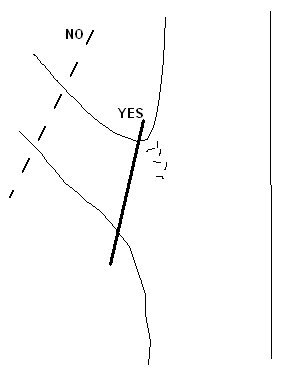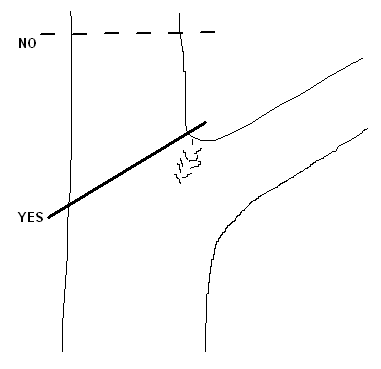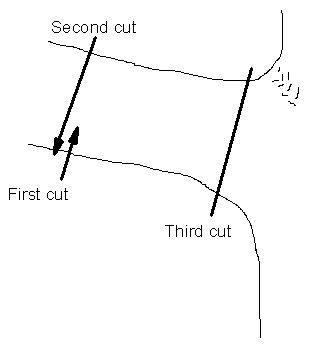Tree Pruning Basics
Guidelines for pruning young and mature trees
Why should you train young trees?
1. Improve structural strength: remove branches that will be more prone to breakage as tree grows
2. Reduce future maintenance: good branch distribution and structure will reduce need for future maintenance and will make any needed maintenance easier.
3. Increase tree longevity: properly trained trees are less likely to suffer branch breakage that can shorten tree life.
Five steps for training young trees
| Step | What | When | How |
|---|---|---|---|
| 1. | Remove broken, diseased, dying, or dead branches | Start at planting and repeat as necessary | Remove only as much as needed to correct the problem |
| 2. | Select a central leader and remove competing leaders | Start at planting and repeat as necessary | Generally the strongest and most vertical stem should be selected as the leader |
| 3. | Select the lowest permanent branch | By the fourth or fifth year after planting; need to wait until tree is tall enough |
Height is based on necessary clearance: typically 8 ft over sidewalks You can use string to mark the branch for future reference |
| 4. | Select main (scaffold) branches and remove or cut back competing branches | After lowest permanent branch is selected |
Distribute main branches around the trunk evenly on all sides Space main branches 12 to 18 inches apart up and down the trunk - use larger spacing for trees that have greater mature height Main branches should be no more than half the size of the trunk at the attachment point and should not contain included bark (bark that becomes pinched between branches that diverge at a narrow angle) Lateral branches on the main branches should not be closer than 2 feet to the trunk |
| 5. | Select and maintain temporary branches below the lowest permanent branch | Starting at planting |
Remove temporary branches that: - become 1½ inches in diameter - are 1/3 the size of the main stem at the point of attachment - are within about 4 inches of selected scaffolds. Shorten temporary branches to suppress them |
- Don't remove any more branches than are needed to accomplish steps 1-5.
- Don't remove more than about 1/4 of the tree canopy in a single year. Commonly, no more than 5% to 10% of the canopy needs to be removed in a given year during training.
When should I prune?
The best time to prune can vary somewhat by species. It is best to prune most trees during the dormant season (December to February), or as close to the dormant season as possible. For mature native oaks, pruning during the dry season (late spring to late summer) is preferred to reduce the chance that decay fungi will invade new pruning wounds. Light pruning and removal of dead wood can usually be done anytime. Avoid pruning during the spring growth flush.
Proper pruning cuts
Best methods for placing pruning cuts on both young and mature trees
 |
 |
No stubs, No flush cuts
When removing a branch, cut all the way back to the main stem without leaving a stub, but don't try to cut flush to the main stem. A small collar of tissue is often present around the base of the stem - cut to the outer edge of that collar.

Use three cuts to avoid tearing bark
When removing a branch with a saw, first cut part way into the branch on the underside about a foot from the area where the final cut will be made. Then cut through the branch from the top. Finally, cut the remaining stub off cleanly near the main stem.
Pruning in this fashion will prevent the bark from tearing due to the weight of the branch, and will result in the smallest possible pruning wound.
Prune back to a large enough branch
When reducing the length of a branch, place the cut next to a side branch that is:
- at least 1/3 the diameter of the removed stem for stems larger that 3/4 inch diameter
- at least 1/4 the diameter of the removed stem for stems of 3/4 inch diameter or less
For very small branches (up to about 1/2 inch diameter), cut back to a bud if no other branches are available
Don't top your tree!!

Topping (cutting large branches back to stubs) is bad for both you and your tree.
- Topping typically removes 50 - 100% of the leaf-bearing crown of the tree. This seriously weakens the tree, and can lead to branch decay and possibly tree death.
- After topping, trees respond by producing excessive numbers of fast growing shoots from latent buds. These sprouts are poorly attached to the stubbed branches and develop into branches that are prone to break off, especially in high winds.
- Topped trees require more maintenance than properly-pruned trees. Corrective pruning is required to make topped trees less hazardous, but can never really restore the tree to its previous form.
How do I choose an arborist or tree care service?
Recommendations from the International Society of Arboriculture (http://www.isa-arbor.com)
What to look for in an arborist or tree care firm:
- Membership in professional organizations such the International Society of Arboriculture (ISA), the National Arborist Association (NAA) or the American Society of Consulting Arborists (ASCA).
- Certification through the ISA Certified Arborist program.
- California State Contractors license (for jobs over $600.00) and proof of insurance.
- A list of references (Don't hesitate to check.)
- Avoid using any tree company that advertises topping or recommends that a tree be topped or uses tree climbing spikes to climb trees that are being pruned. Knowledgeable arborists know that topping is harmful to trees and is not an accepted practice. Climbing spikes can damage trees, and their use should be limited to trees that are being removed.